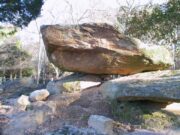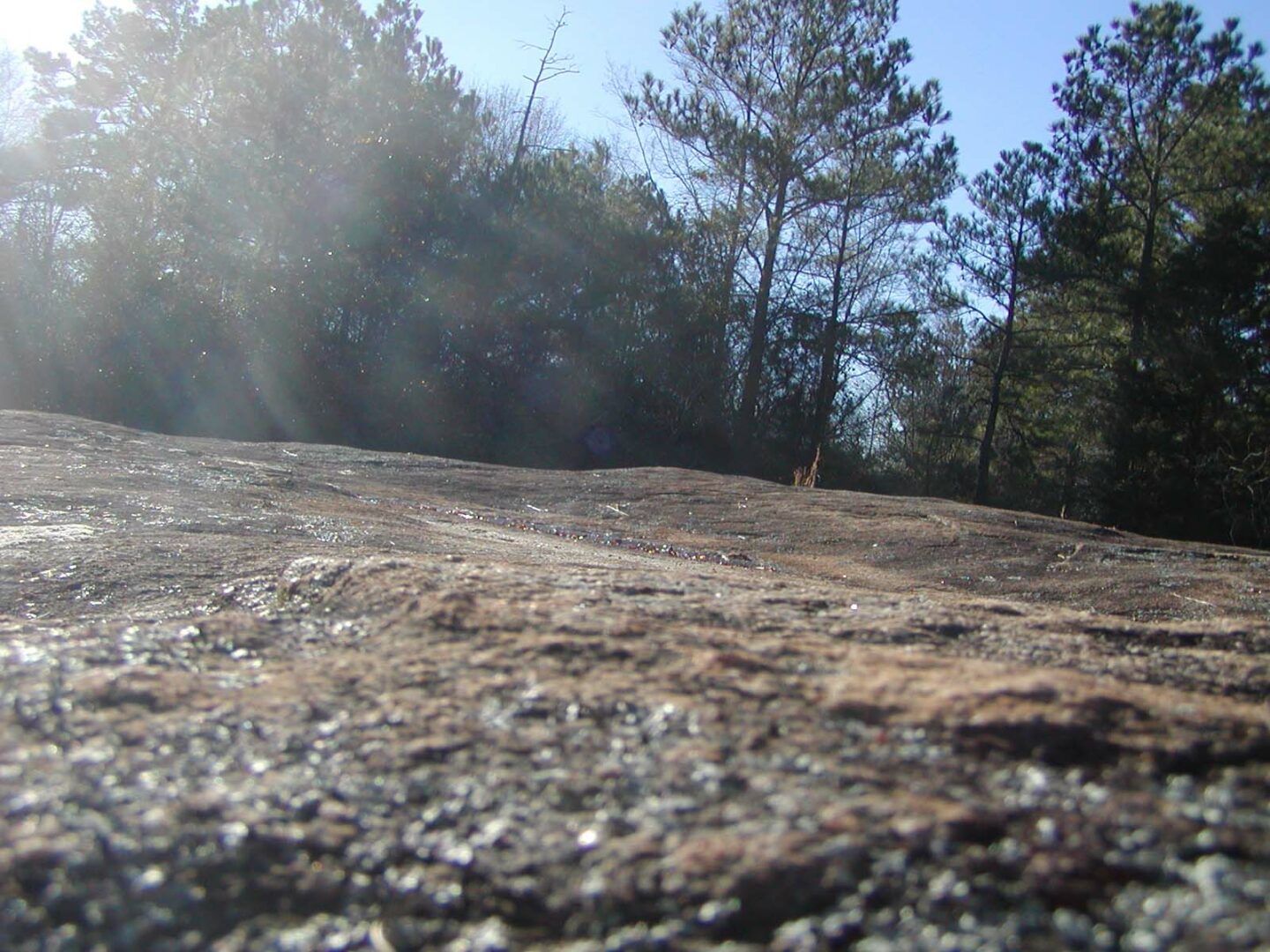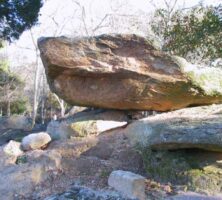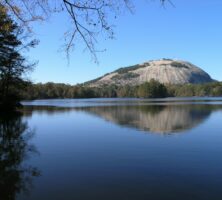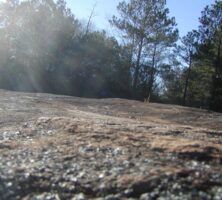Granite outcrops are exposed granitic rocks, found in the Piedmont and Appalachian Mountain regions. These outcrops weather in characteristic patterns and provide unusual habitats where a unique set of plants and animals have adapted. It is estimated that more than 90 percent of the approximately 12,000 acres of exposed granite in the Southeast is located in Georgia, including Stone Mountain, the largest of the Piedmont outcrops.
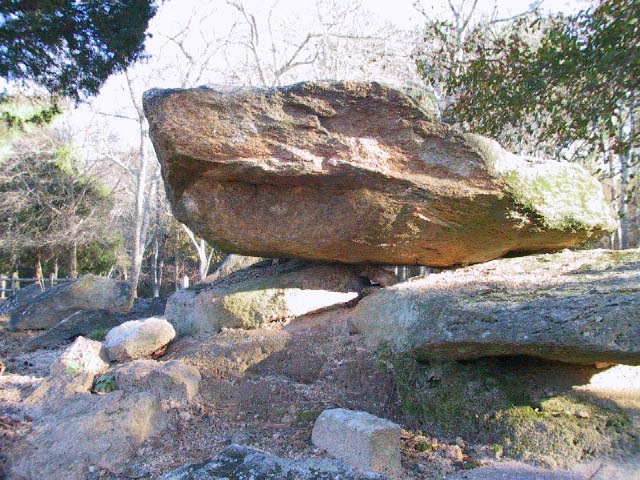
Photograph by Melinda Smith Mullikin, New Georgia Encyclopedia
Geological Age and Weathering
Geologists estimate that most of the granitic rocks that outcrop in the Piedmont of the southeastern United States are approximately 300-350 million years old. These outcrops were formed by the intrusion of molten granite into preexisting country rock at a depth of about ten miles below the surface. Over millions of years, erosion removed thousands of feet of overlying rock, exposing the more resistant bodies of granite.
Granitic outcrops vary tremendously in size, shape, and position in the landscape. Some consist of small, flat-lying exposures (or flatrocks) only a few square feet in area. At the other extreme, Stone Mountain is a steeply sloping outcrop that covers nearly 600 acres and rises approximately 825 feet above the surrounding countryside.
Granite itself is usually very heterogeneous in its mineral composition and texture. Often neighboring outcrops that would appear to have developed as parts of the same rock actually occur on distinctly different types of rock intrusions. For example, Stone Mountain, Panola Mountain, and Arabia Mountain all occur within about fifteen miles of each other, east and southeast of Atlanta. Yet each represents a distinct and separate type of granite: Stone Mountain granite, Panola granite, and Arabia Mountain gneiss, respectively.
The mineral composition and texture of various rock units may have their greatest significance as evidence of weathering patterns that produce distinctive rock outcrop habitats. The rock surface is commonly subject to exfoliation, with “shells” of rock sloughing away to create crevices and talus piles at the base. Uneven weathering of the rock surface results in shallow depressions, called weathering or solution pits. It is in these depressions that the most distinctive granite-outcrop plants and animals occur.
Rock-rimmed pits that are deep enough to hold rainwater harbor a number of rare aquatic plants. Other depressions, which have accumulated a thin layer of soil and which lack a complete rim to retain water, support many unusual annual plants. Other distinctive habitats on the outcrops include deeper accumulations of soil over bare granite, seepage areas created by the slow discharge of water from patches of forest on the rocks, and the edges of nearby forests.
An unexpectedly large number of plant species occur only on Piedmont granite outcrops, which would seem to reflect their antiquity and isolation. Among others, this group includes the monospecific genera Diamorpha and Amphianthus.
Environmental Conditions
Environmental conditions on granite outcrops are harsh and differ sharply from conditions in the adjacent forest. Temperatures on the outcrops typically are much higher than in the surrounding forest because of the high absorption of heat by the rocks and low evapotranspiration. Temperatures in excess of 120 degrees Fahrenheit are common at rock surfaces during the summer months.
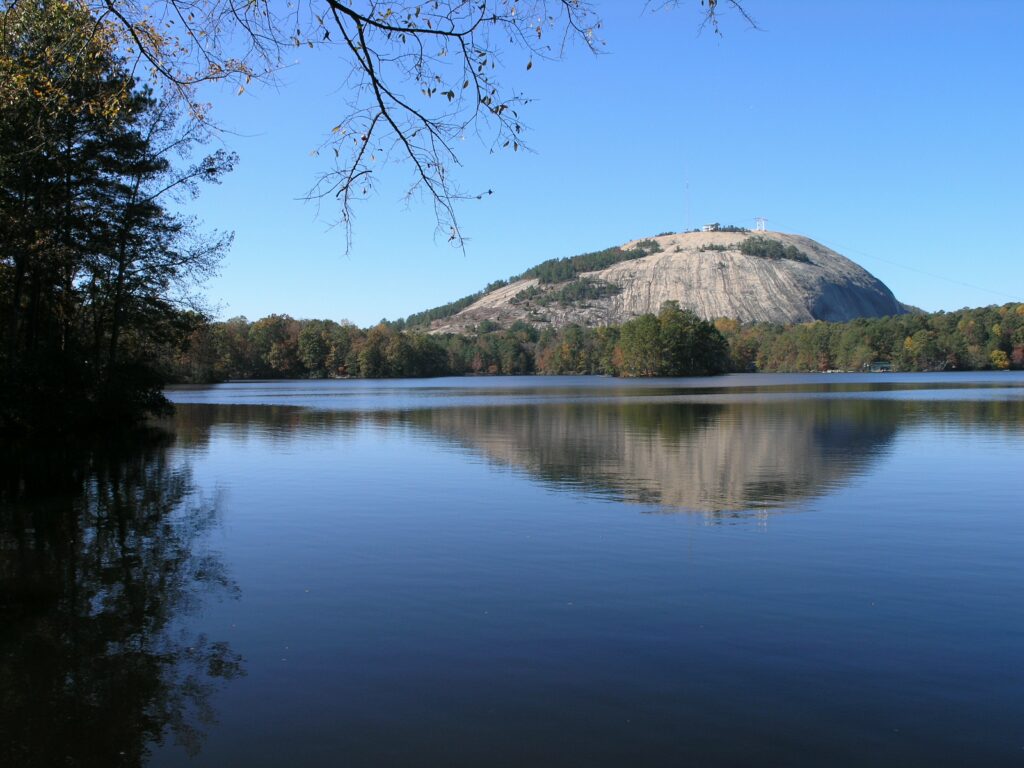
Image from Darryl Pierce
Shallow mineral soil overlying impervious rock and sparse vegetation cover lead to extraordinarily high water runoff.
Conservation Status
Unfortunately, local landowners and government agencies alike have viewed most of the granite outcrops in Georgia as relatively worthless land, since such property cannot be used for construction, agriculture, or grazing. Thus, outcrops have frequently been used as dump sites for household or construction waste. Many others have been destroyed by quarrying or have been covered by lake waters after the construction of a dam.
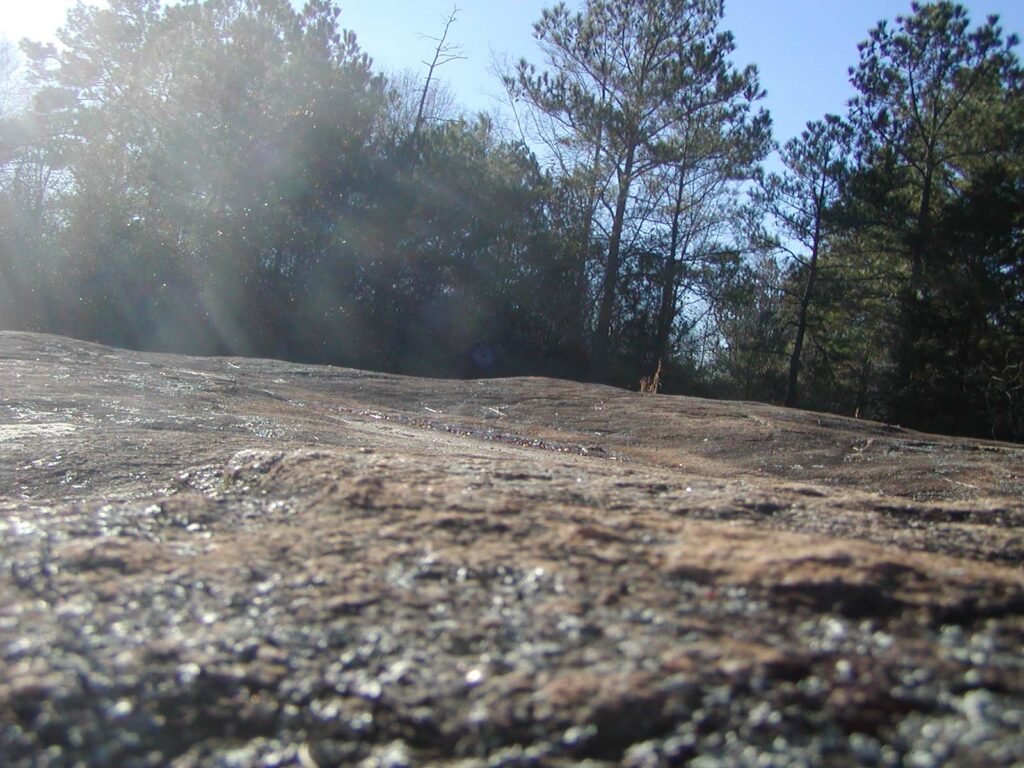
Photograph by Chad A. S. Mullikin
Some sites, however, have been protected, either because of their inaccessibility to humans or because of timely action on the part of governmental or private agencies. These sites include Stone Mountain in DeKalb County, Heggie’s Rock in Columbia County, Davidson-Arabia Mountain Park in DeKalb County, Little Kennesaw Mountain in Cobb County, and Panola Mountain State Conservation Park, which spans Rockdale, Henry, and DeKalb counties.


